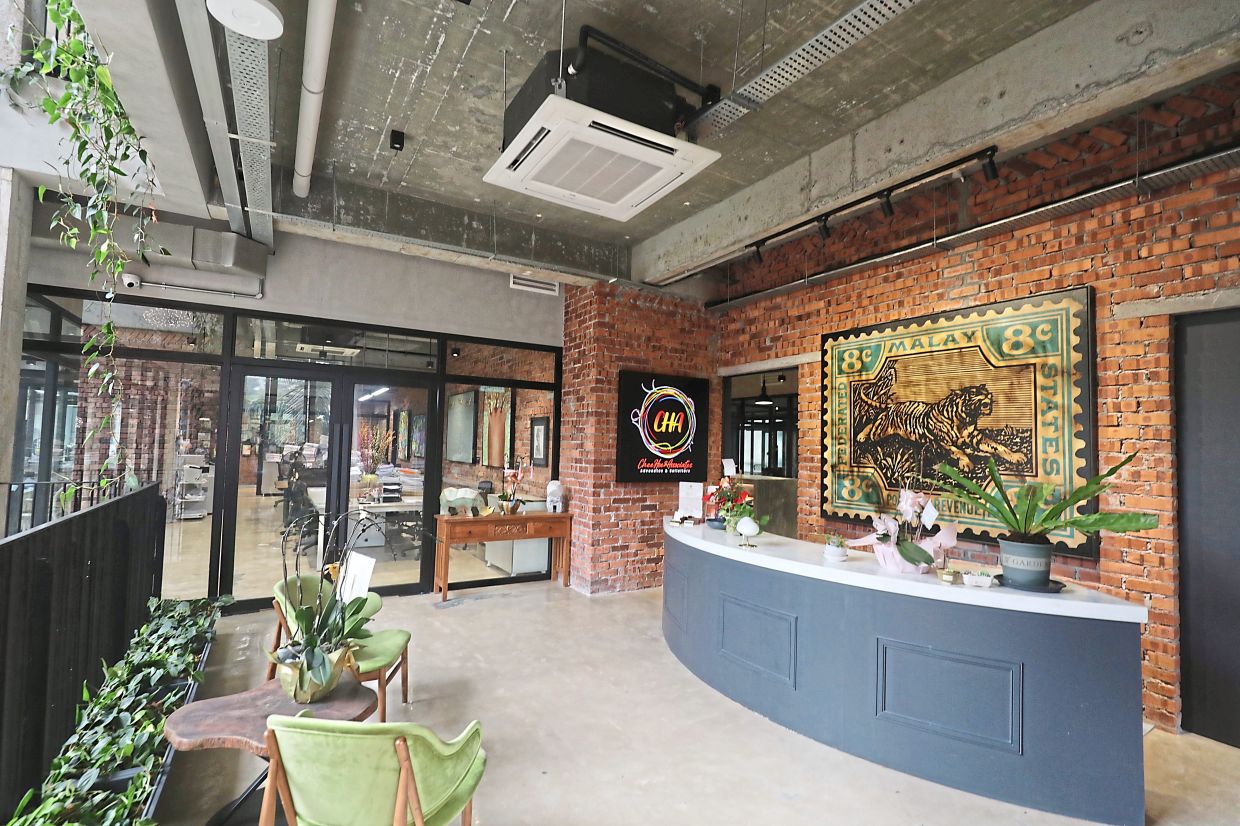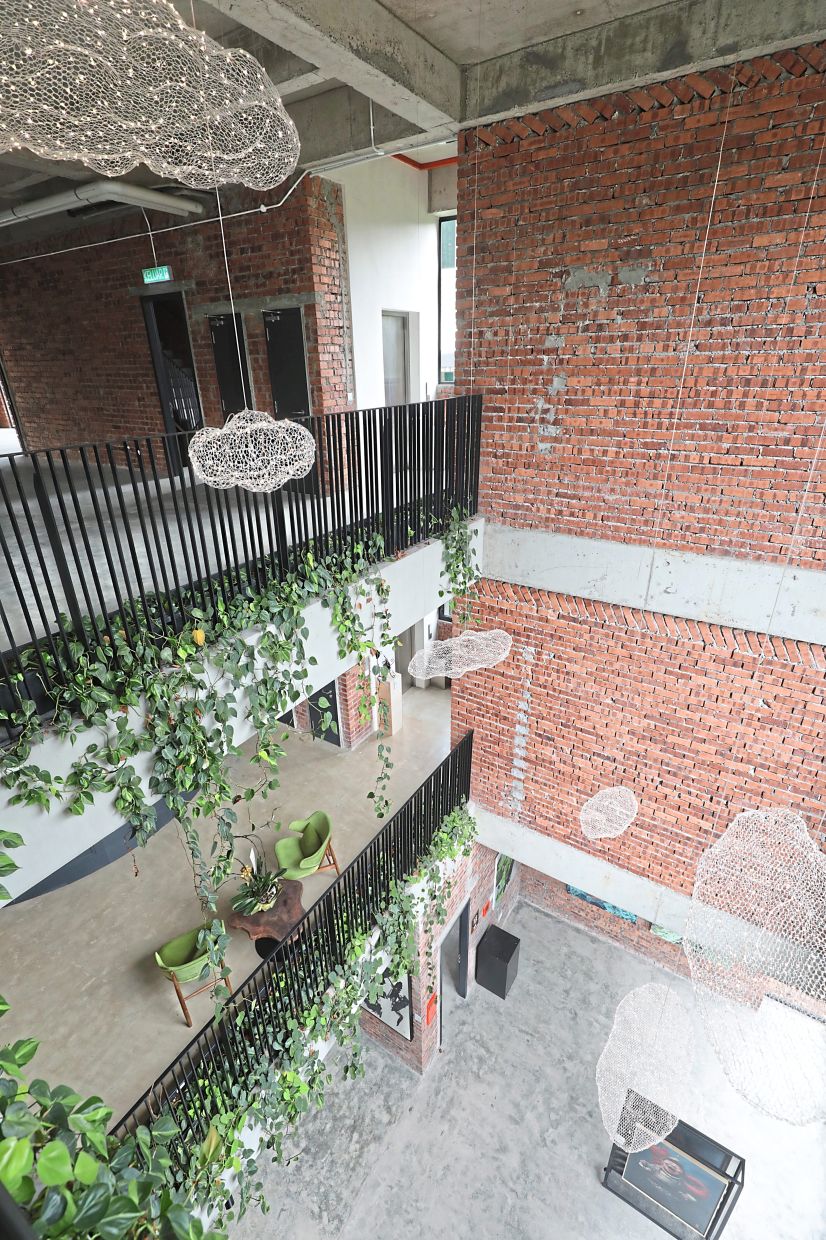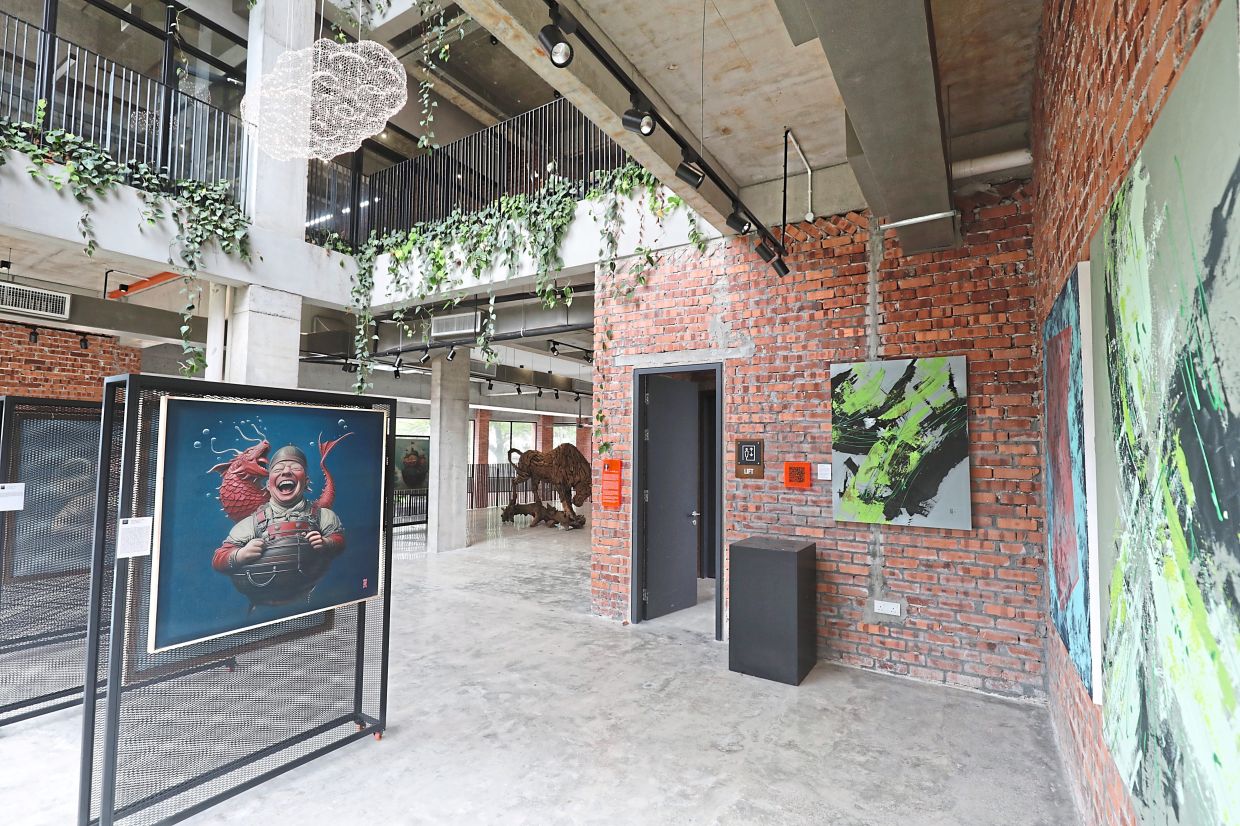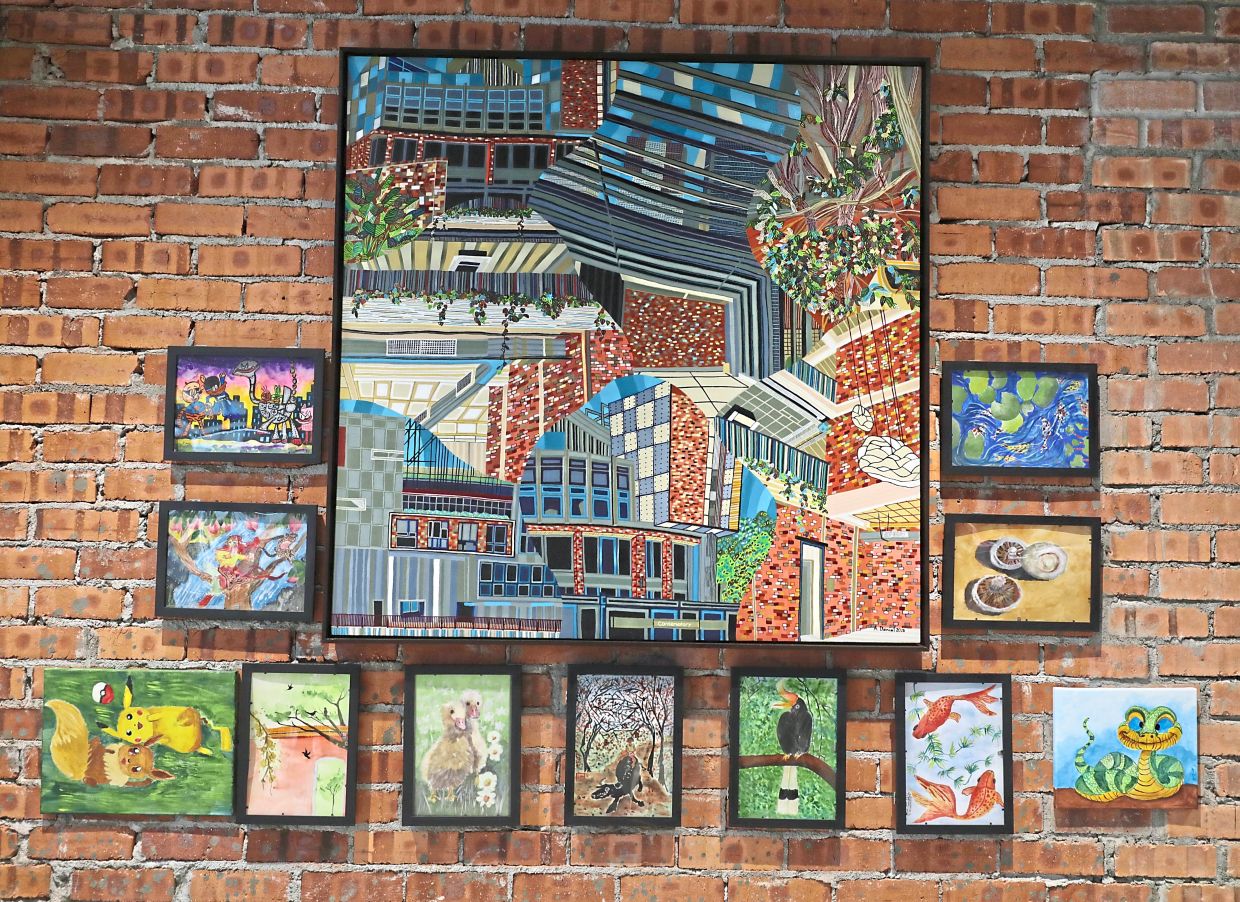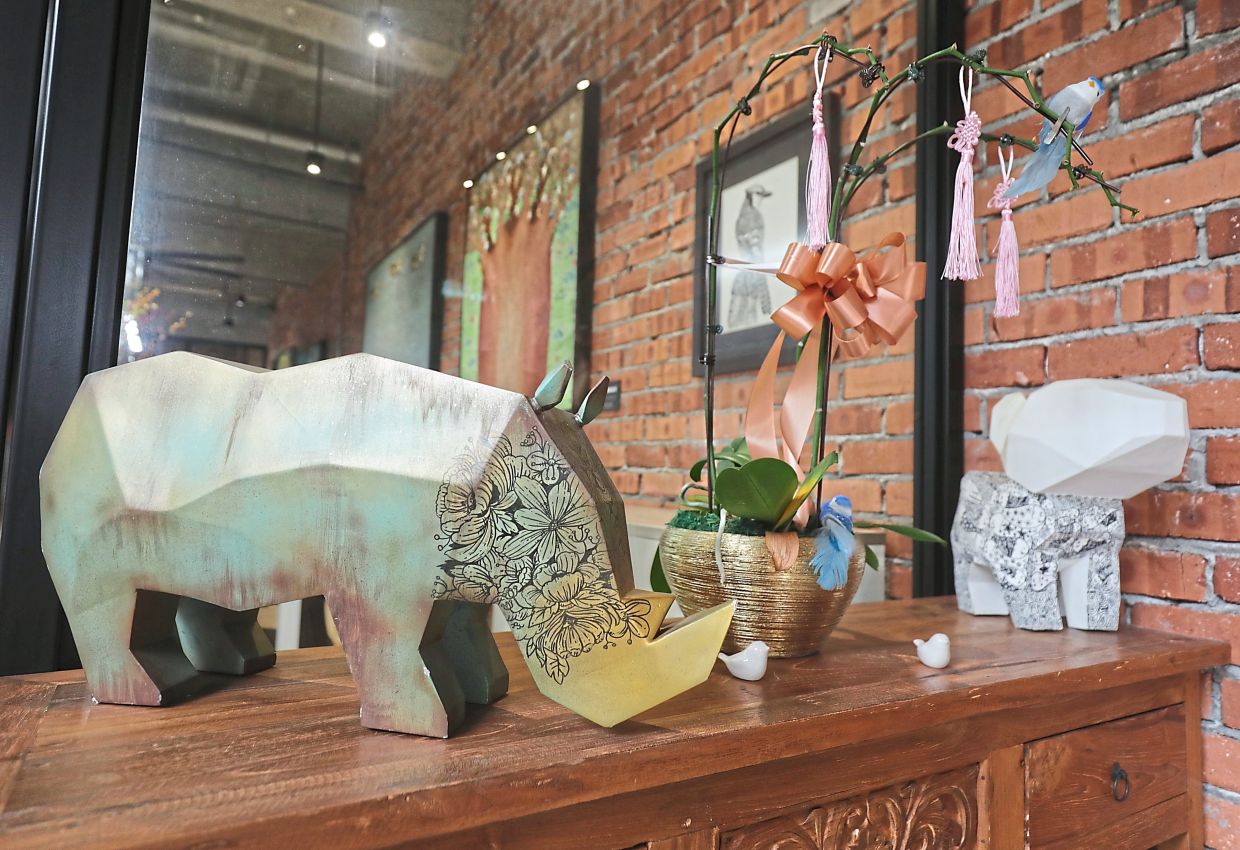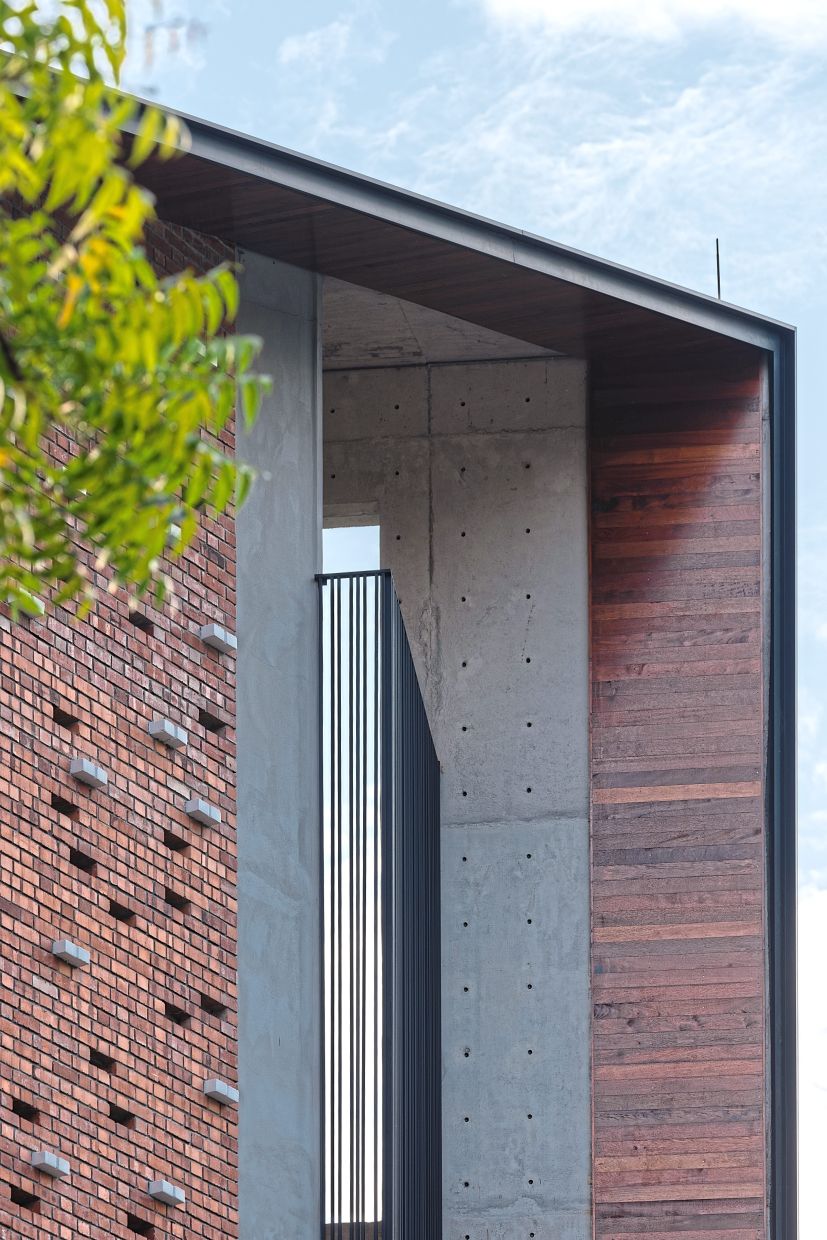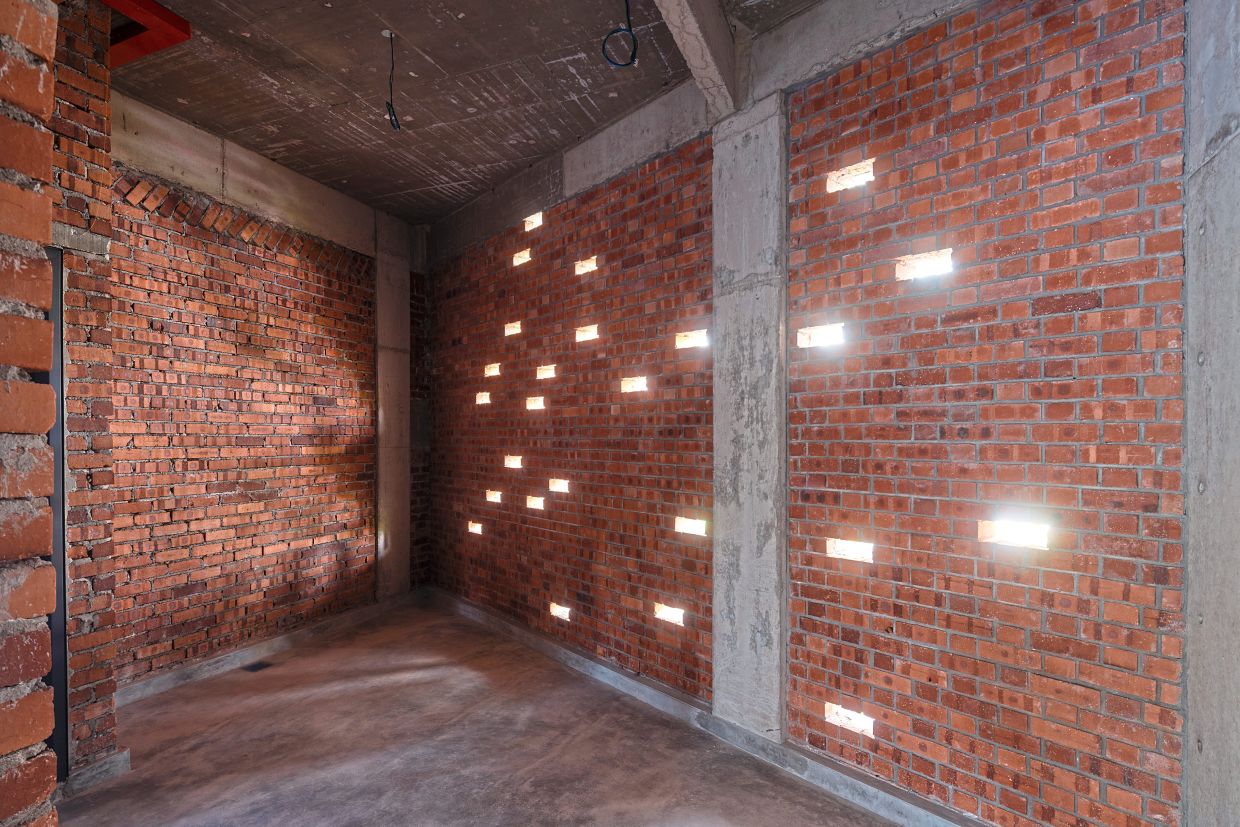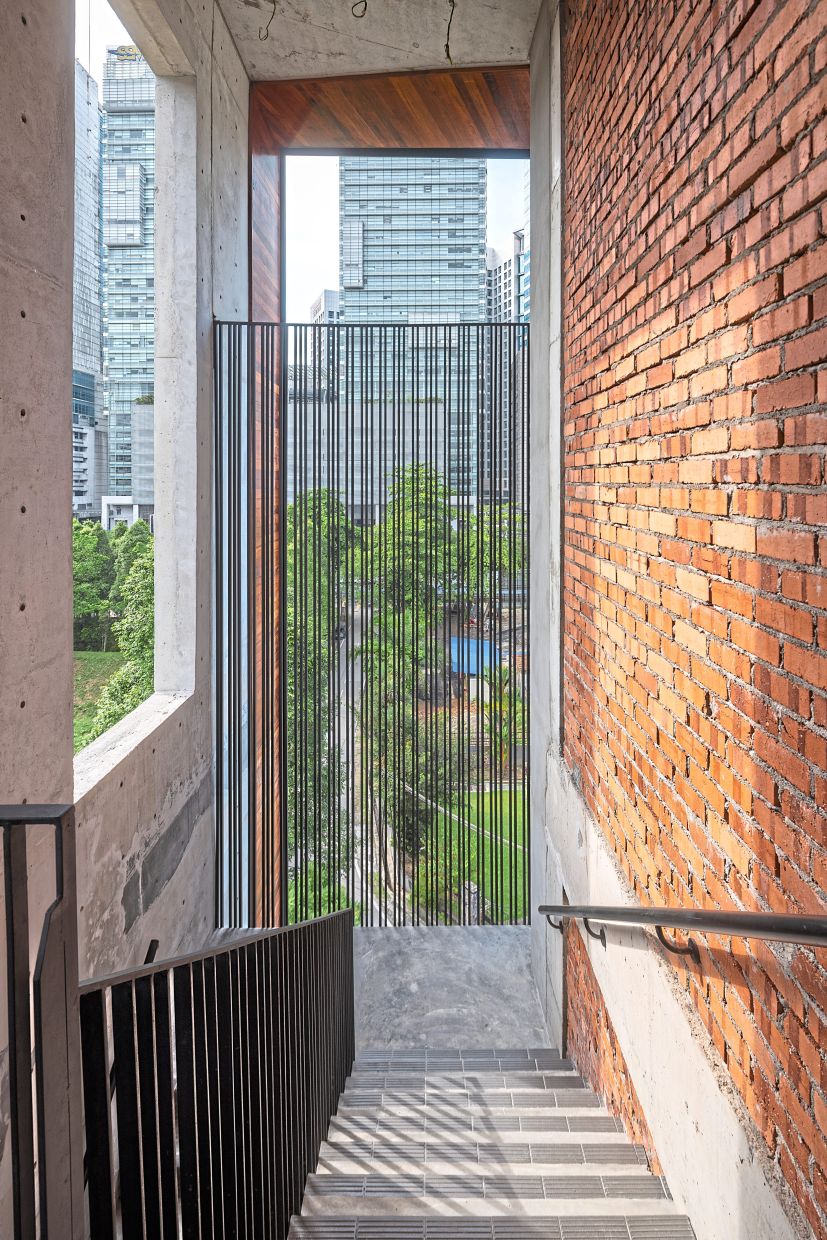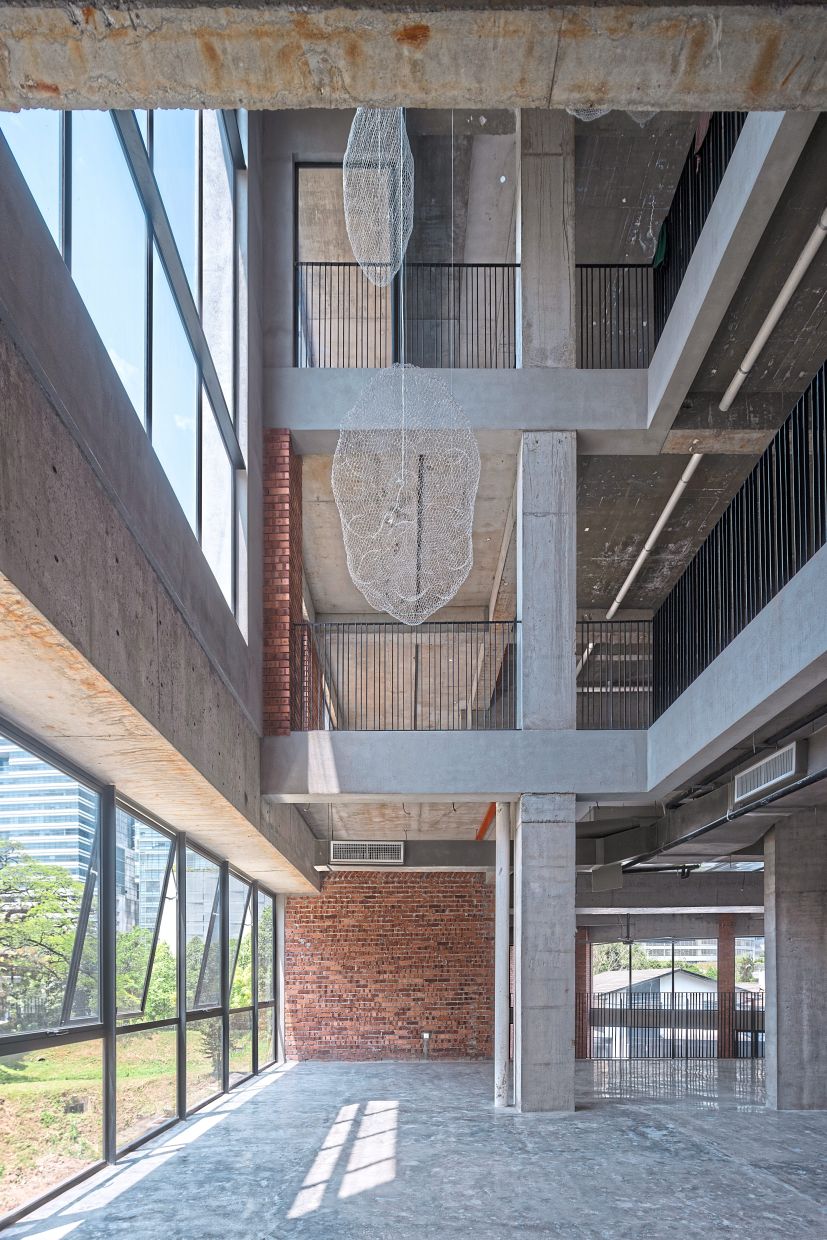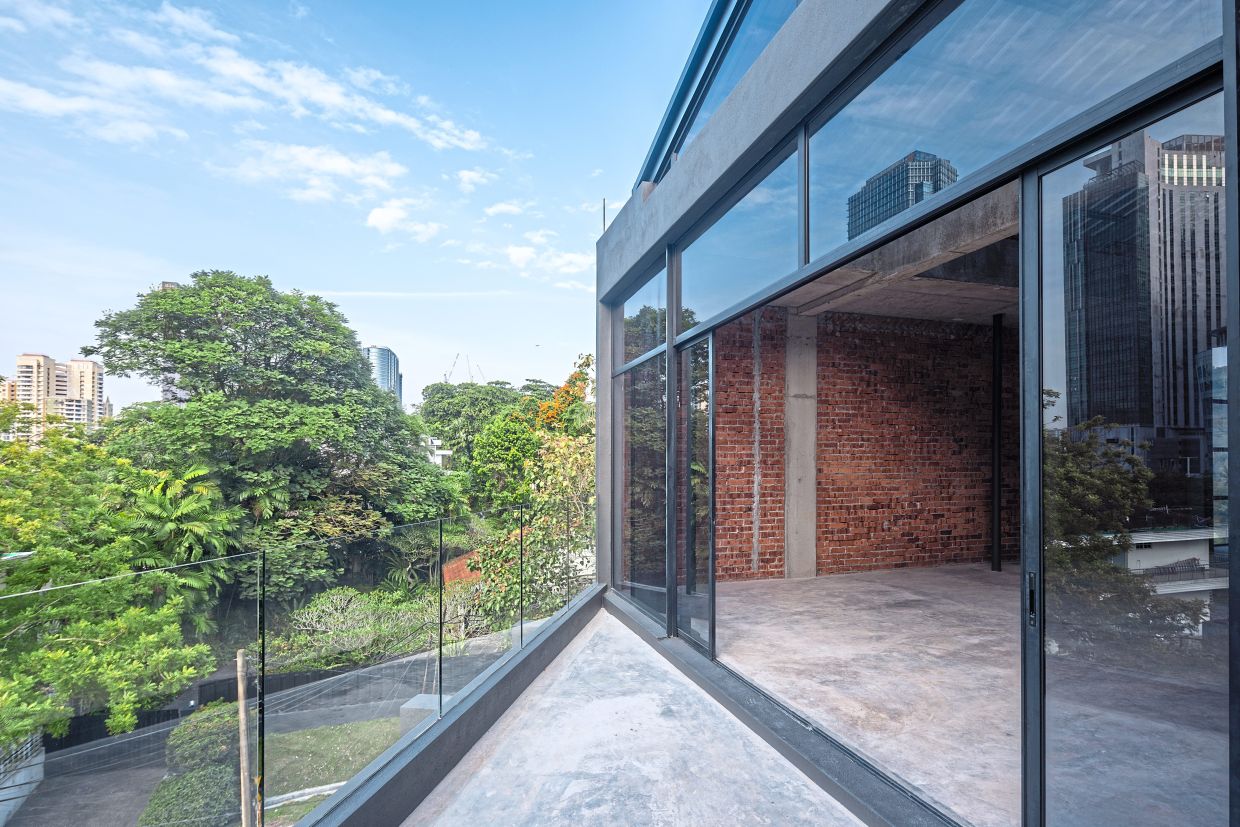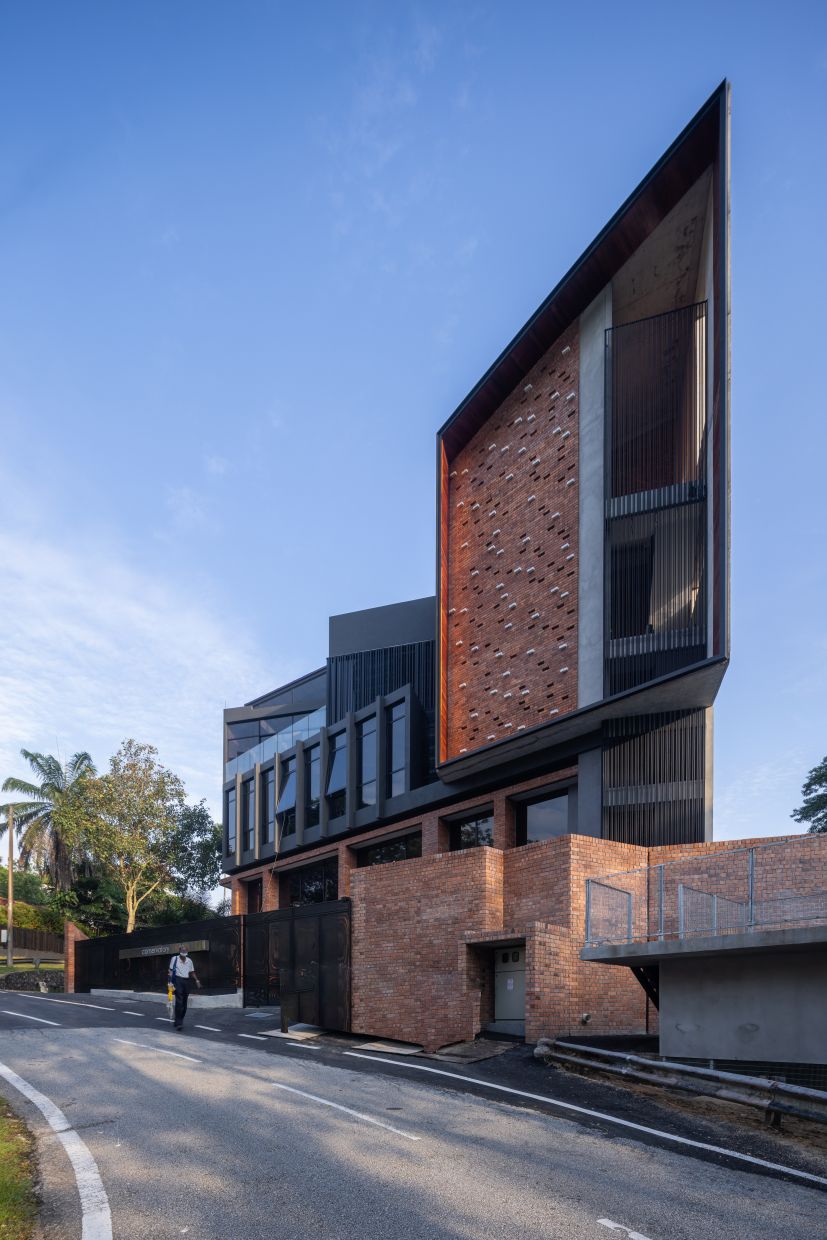The Conservatory is an office, an event space and a private gallery rolled into one. Photos: The Star/Samuel Ong
Along Kuala Lumpur’s Federal Hill, or Bukit Persekutuan, stands an imposing red brick building with glass that provides priceless, uninterrupted views of its natural surroundings.
The trapezium-shaped structure may look striking and arresting, but the philosophy behind its construction is very much down-to-earth.
Designed by architect Lim Kee Yen, the owners, husband-and-wife lawyers Lai Chee Hoe and Ng Su-San, wanted to create a space that is modern yet able to embrace nature.
The building, known as Conservatory, is a private residence envisioned as an architectural canvas, set within a compact urban lot, with a total build-up of approximately 20,000sq ft (1,858sq m) across multiple levels.
The structure blends with its natural environment, and once inside, one feels as if they are enveloped by nature.
“The design of the building actively engages with its surroundings – borrowing light, greenery and air – to transform spatial constraints into opportunities for richness and surprise,” shares Lim, who was introduced to the homeowners by a mutual friend.
Making a statement
Lai and Ng, who are both partners at Chee Hoe & Associates, bought the land in 2018 and broke ground the year after.
Says Ng: “We loved driving around the area looking at buildings and that was when we saw the land was up for sale.
“The land is nestled within the lush Federal Hill, and little pockets of green are becoming very rare for properties that are minutes away from the city centre. We have always wanted a structure with red bricks and raw elements that blend in with nature.
“And we also wanted to have plenty of glass doors and windows to allow the sun to radiate the space within, akin to a glasshouse for growing plants, hence the name Conservatory.”
The initial brief was unconventional, to say the least. According to Lee, the homeowners were not looking for a typical home.
Instead, they wanted a space that would house their private chamber, a multifunctional hall for gatherings, a dining area and spaces for work – all articulated using raw materials like fair-faced bricks, bare concrete and glass.
“The idea of a ‘conservatory’ in the tropical climate – a space that captures the sky and garden as living elements – became a key inspiration. When the Covid-19 pandemic hit during construction, the brief evolved. With changing needs, we proposed a more radical response: a largely undefined, open architectural framework with minimal partitions that would allow interpretation over time,” Lee says.
Step into the warm atmosphere of the building and one would notice that the sophisticated space is adorned with a curation of local and international design pieces and artworks by the owners, adding to its charm.
One artwork that stands out is a vibrant painting by local neurodivergent artist Danial Kushairi that sits proudly in Ng’s office.
The artist’s attention to details and keen observation have allowed him to capture Conservatory’s architectural charm on canvas.
“We didn’t know what to expect when we commissioned Danial to create this art. But he has managed to capture every detail of the building beautifully,” Ng says.
Let the light in
There was mutual trust from the beginning, says Lee.
“Our first proposal was met with minimal changes, which showed alignment in values. However, it was during the construction phase – particularly when the pandemic struck – that deeper conversations took place. The conventional spatial needs began to evolve, and we were able to revisit the design in a more abstract and open way.”
“We took this project as a chance to reimagine what living could mean in today’s context. Rather than fixed rooms and rigid typologies, we focused on space as tactile and sensory experiences – defined not by walls, but by light, texture and material honesty. We worked with impermanence and uncertainty as design tools,” adds Lee.
Therefore, instead of imposing fixed functions, Lee reinterpreted the spaces based on needs. For example, he turned the foyer into a gallery, and the garage into a function hall.
The project became a collaborative journey that allowed the architecture to evolve organically, adapting to changing requirements while staying true to the original intent.
Materials like brick, metal and concrete became surfaces for natural light and shadow to animate throughout the day. Traditional spaces like bedrooms and living halls were transformed into open, flexible environments.
Form and function
To Lee, form and function are inseparable. A framed window is not just for ventilation or view – it’s a moment for contemplation. Exposed concrete offers both practical durability and raw, quiet beauty, especially when juxtaposed against bricks or glass.
“We trust our intuition in making aesthetic decisions that are grounded in human experience. For instance, we introduced protruding brick courses along the façade – not merely for texture, but to create subtle shadows that shift with time.
“Openings were composed based on the orientation and movement of light, with or without screens, to craft moments that connect people with nature and time,” he says.
The vast possibilities of what Conservatory could be make it incredibly unique.
“It can be an event space, an art gallery or a home,” says Ng. “It was a conscious decision to make the place this flexible. The lift in the building allows for the disabled to move around easily, and it is also suitable for a multi- generational home with elderly folks around.
“As you look out the windows, you can see tall trees that have been here for a long time. We wanted to build something new while embracing the natural beauty that was already present within the neighbourhood. In a lot of the new developments that we usually see, the site is often stripped clean with no trees remaining. To get a place like this where we are surrounded with mature trees is truly a gem,” says Ng.
“We currently house our office here within the building. We hope that we can allow our colleagues to be closer to nature.”
Ng says their first office was a tiny shoplot in Taman Tun Dr Ismail.
“From there, we moved to Plaza Mont Kiara and since September last year, we have been at Conservatory. The journey is a statement of more than 20 years of hard work,” she adds.




